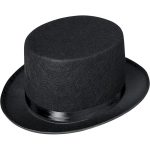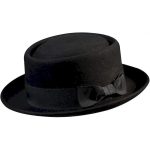The top hat has long been emblematic of sophistication and elegance, serving as a quintessential item in formal and ceremonial attire. But who wears a top hat, and why has this accessory maintained such enduring popularity throughout various epochs? Historically, the top hat has distinguished the upper class and served as a vital part of gentlemanly attire, but its applications have expanded over time. In this article, we will explore the origins of the top hat, examine who typically wears it in contemporary society, discuss the various occasions that call for a top hat, and analyze its cultural significance. This exploration will provide insights not only into who wears a top hat but also into how this classic accessory has remained relevant in modern fashion trends.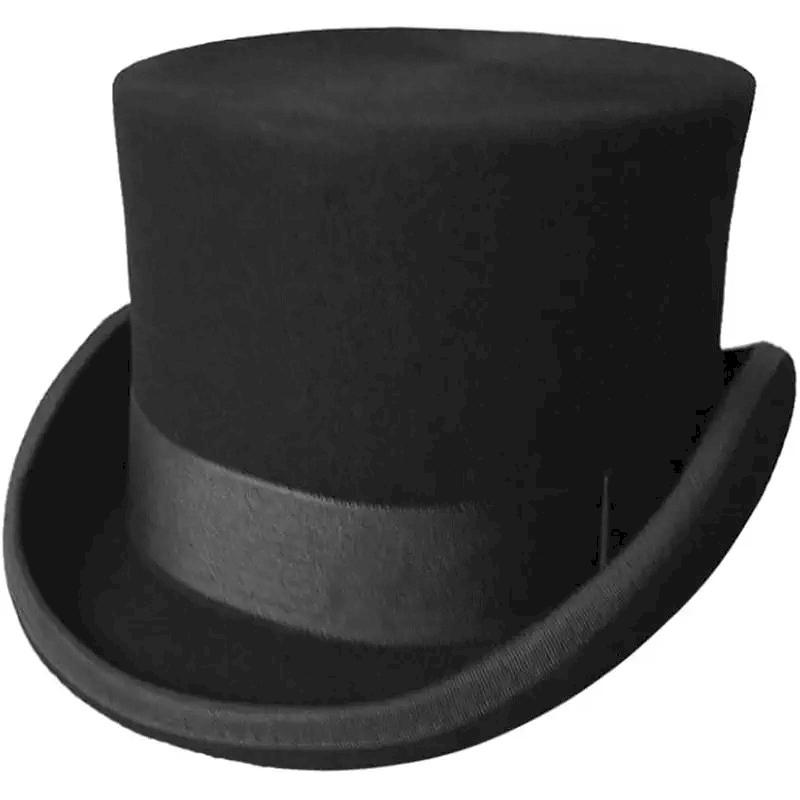
The Historical Origins of the Top Hat
To truly understand who wears a top hat, one must first delve into the historical context surrounding this iconic piece of headwear. The top hat has a rich history that reflects societal changes and evolving fashion trends.
Early Development of the Top Hat
The top hat originated in the late 18th century during a period of significant social change in Europe. It made its debut in the fashion world around 1797, attributed to a London hat maker named John Hetherington. Initial designs were crafted from silk, featuring a tall, cylindrical shape that became synonymous with the refined styles of the time.
Rise in Popularity
By the 19th century, the top hat evolved into a staple for men of the upper class. It became associated with wealth, power, and status as it was worn by aristocrats and influential figures. The rules of fashion dictated that wearing a top hat was essential for attending formal events, including balls, weddings, and other ceremonies.
Iconic Representations
As the top hat gained popularity, it also became a symbol of cultural significance. Renowned artists, authors, and political figures were often depicted wearing top hats in portraits, further embedding the accessory in society’s collective consciousness.
Who Wears a Top Hat Today?
While the top hat is not a daily accessory for most individuals today, it still holds relevance in specific contexts. Below, we will explore various groups of people who may wear a top hat now.
1. Formal Event Attendees
Individuals attending formal occasions, such as weddings, galas, and high society events, often choose to wear a top hat as part of their attire. The top hat adds an air of sophistication that complements a tuxedo or formal dress.
Example Occasions
- Weddings: Grooms and groomsmen often wear top hats, especially in traditional ceremonies.
- Formal Balls: Many attendees don full evening wear, including top hats, to meet dress codes.
2. Performers and Entertainers
The top hat is a popular choice for performers, especially in theatrical and magic performances. Magicians, in particular, often use the top hat as part of their signature look, as it represents traditional illusions and theatrics.
Iconic Performers
- Magicians: The top hat has become an iconic part of the magician’s outfit, symbolizing mystery and skill.
- Circus Performers: Clowns and ringmasters sometimes wear top hats to enhance their costumes and entertain audiences.
3. Fashion Enthusiasts
Fashion-forward individuals may choose to wear a top hat as a bold statement piece. Designers often showcase modified versions of the top hat in fashion shows, inspiring trendsetters to incorporate this accessory into their unique styles.
Modern Styles
- Street Style: Some modern fashion enthusiasts incorporate top hats into their streetwear, making them versatile for creative self-expression.
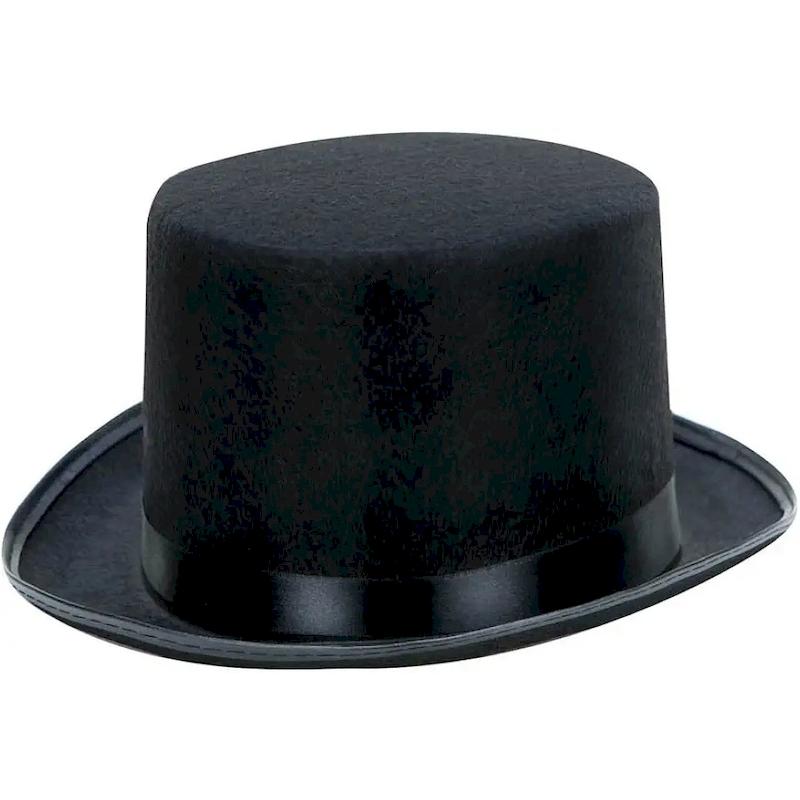
- Vintage Fashion: Retro enthusiasts appreciate classic fashion and often choose the top hat as an accessory that emphasizes vintage aesthetics.
4. Professionals in Certain Fields
In specific professional settings, particularly in the arts, finance, and hospitality, individuals may wear a top hat to signal professionalism and sophistication.
Career Contexts
- Actors and Actresses: Those performing in period pieces may wear top hats to stay authentic to their characters.
- Event Coordinators: Coordinators for high-profile events may wear top hats to embody class and elegance.
Occasions That Call for a Top Hat
Understanding when it is appropriate to wear a top hat can guide individuals in choosing this unique accessory. Here are occasions that typically warrant donning a top hat:
1. Weddings
Weddings remain one of the most traditional settings where top hats are still commonly seen. They embody an air of sophistication and elegance, making them suitable for grooms, groomsmen, and even guests at formal weddings.
Styles for Weddings
- Classic Black Silk Top Hat: This timeless design suits formal wedding attire.
- Colored or Patterned Top Hats: Sometimes, the wedding theme might inspire more unique choices, adding a personal touch to outfits.
2. Formal Balls and Galas
At formal balls or galas, guests often adhere to strict dress codes that demand elegant attire. Wearing a top hat signifies respect for the occasion and celebrates the event’s formality.
Other Considerations
- Dress Codes: Confirming the expected attire helps prevent any misunderstandings about suitable accessories.
- Pairing Your Ensemble: Combining the top hat with appropriate suits or dresses enhances the overall look.
3. Theatrical Performances
In the realm of theater, the top hat creates a dramatic presence. Many characters, especially in productions set during the Victorian or Edwardian eras, are seen wearing this accessory.
Theatrical Contexts
- Musicals: In productions like “My Fair Lady,” characters often wear top hats as part of their costumes.
- Magic Shows: Top hats play a vital role in magic performances, adding intrigue to the character’s antics.
4. New Year’s Eve Celebrations
Top hats have become a festive symbol during New Year’s Eve celebrations, often worn during parties and parades. They add a flair of extravagance while ringing in the new year.
Celebration Ideas
- Party Styling: Use sparkling or decorated top hats as part of the celebration attire for a fun and festive vibe.
- Accessorizing: Consider pairing with themed outfits or accessories that match the celebration’s grandeur.
The Cultural Significance of the Top Hat
The top hat carries significant cultural weight, impacting the fashion landscape and societal customs. Understanding its cultural implications can enhance appreciation of the accessory.
1. Class and Society
Throughout history, the top hat has been closely associated with class distinction. Typically worn by the affluent, the top hat signifies social standing, wealth, and sophistication. Today, it remains a symbol of elegance that bridges the gap between past and present.
2. Symbol of Celebration
In cultural contexts, the top hat often appears during moments of joy or celebration. Its presence at weddings, parties, and formal events represents prosperity and festive spirit, cementing its status as a joyful accessory.
3. Historical Associations with Power
Political figures and leaders have often donned top hats, contributing to their association with authority and power. This historical link creates an inspirational aura surrounding those who wear the accessory.
4. Embracing Creativity
As fashion evolved, individuals began to embrace the top hat as part of their creative expression. Its incorporation into casual attire signifies the dynamic nature of modern fashion, allowing wearers to redefine cultural symbols.
Styling Tips for Wearing a Top Hat
Once you determine when to wear a top hat, it’s essential to know how to style it effectively for different occasions. Here are some tips to help you maximize your top hat’s impact:
1. Matching Outfits
When wearing a top hat, ensure that the rest of your outfit complements it. Fitted suits, jackets, or classic tuxedos maintain elegance and cohesiveness.
2. Choosing the Right Accessories
Select accessories such as cufflinks, ties, and pocket squares that harmonize with the top hat. Matching colors or patterns can enhance your overall ensemble.
3. Maintain Proper Fit
Ensure that your top hat fits snugly without being too tight. An ill-fitting hat can detract from your overall appearance and comfort. Consider visiting a hat shop for professional measurements and fittings.
4. Balance the Look
While the top hat makes a statement, avoid overcrowding your ensemble with excessive embellishments. Allow the top hat to be the focal point, complemented by simpler pieces to achieve a flattering balance.
5. Confident Demeanor
Wear the top hat with confidence! The way you carry yourself significantly impacts how others perceive your outfit. Walk with poise, and embrace the elegance that the accessory embodies.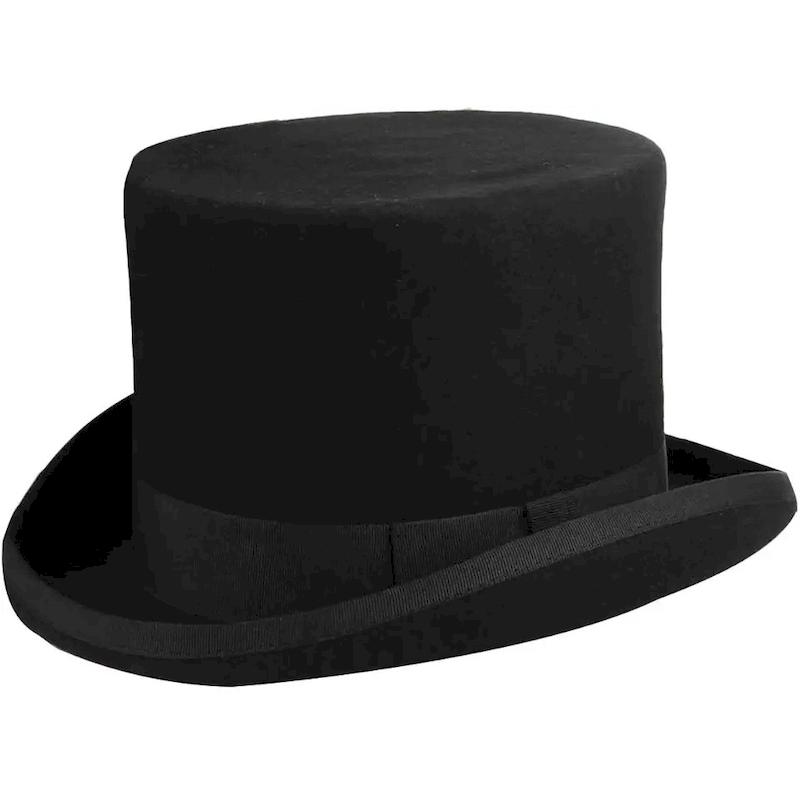
Conclusion
In conclusion, the top hat holds a distinctive place in fashion history, symbolizing elegance, authority, and celebration. Understanding who wears a top hat and the occasions that call for it enhances your appreciation of this timeless accessory. From weddings to festive celebrations, the top hat remains relevant in contemporary style, bridging the gap between traditional elegance and modern fashion trends.
Choosing the right design, material, and fit will ensure you enjoy the unique essence that a top hat brings to any outfit. By integrating thoughtful styling and proper maintenance, you can elevate your presence whenever you wear this iconic headpiece. Whether nostalgic or innovative in design, the top hat allows individuals to express their personality while celebrating the artistry of fashion.
